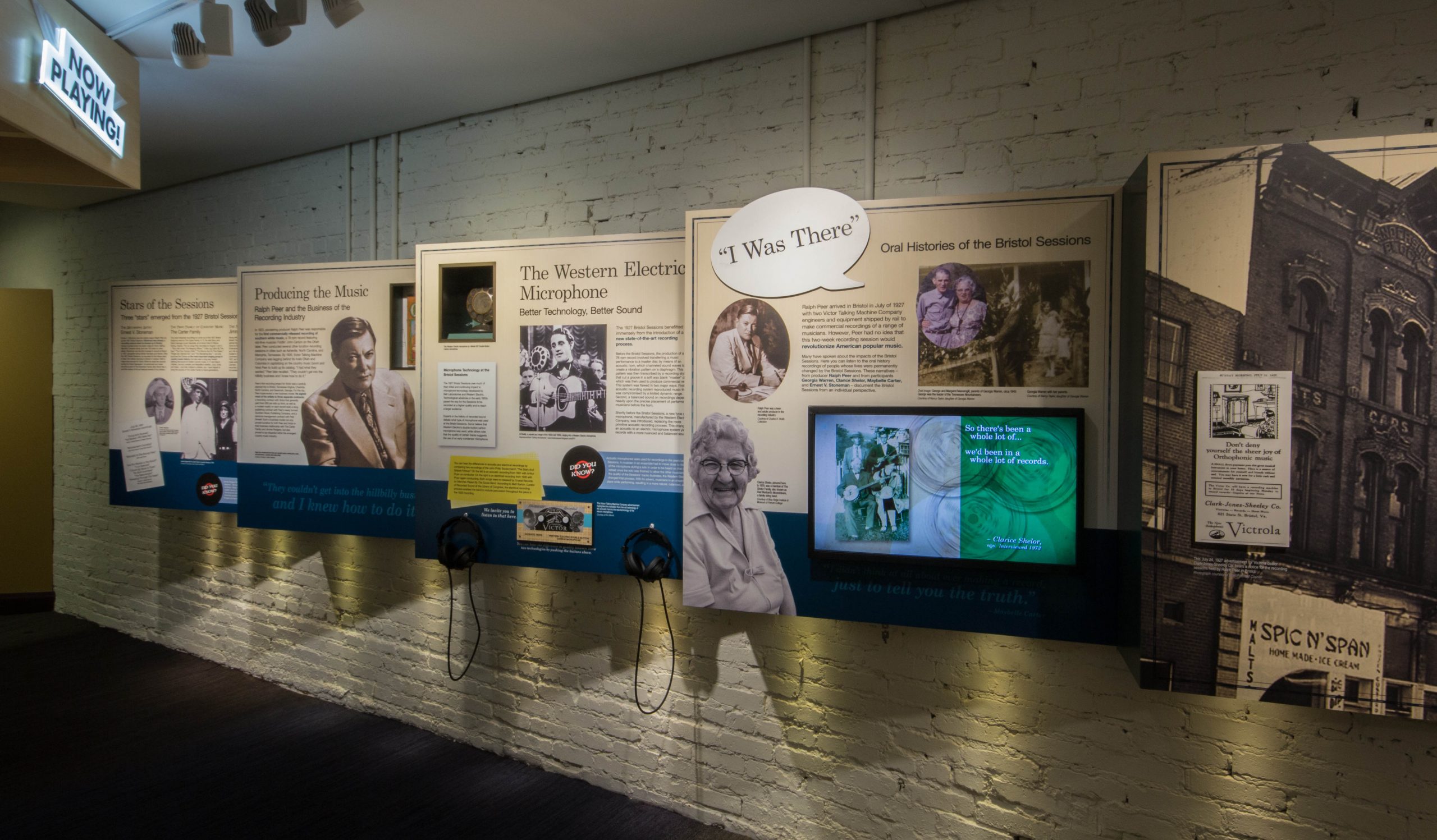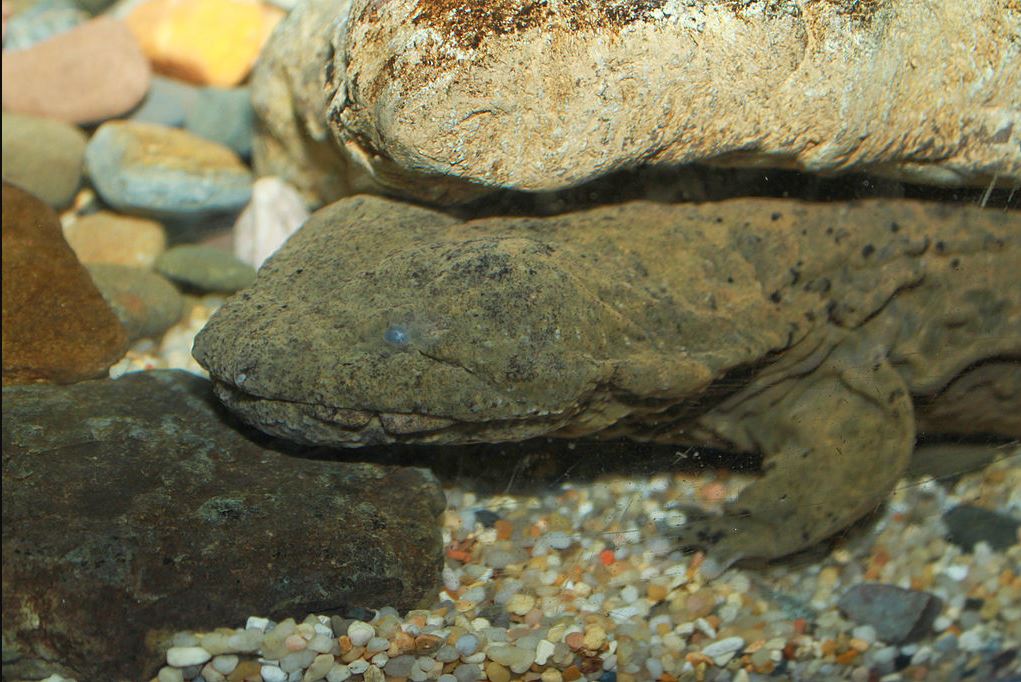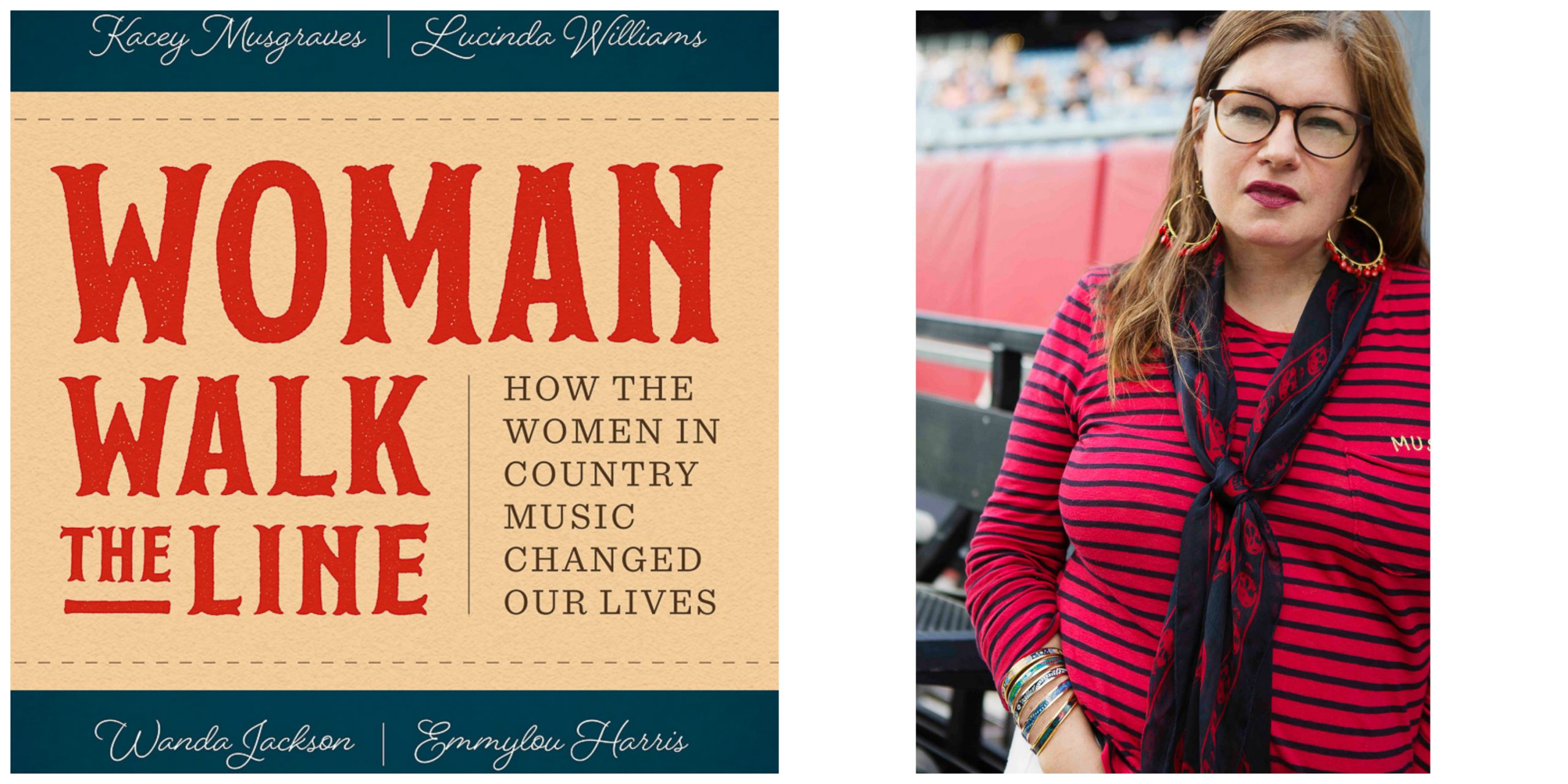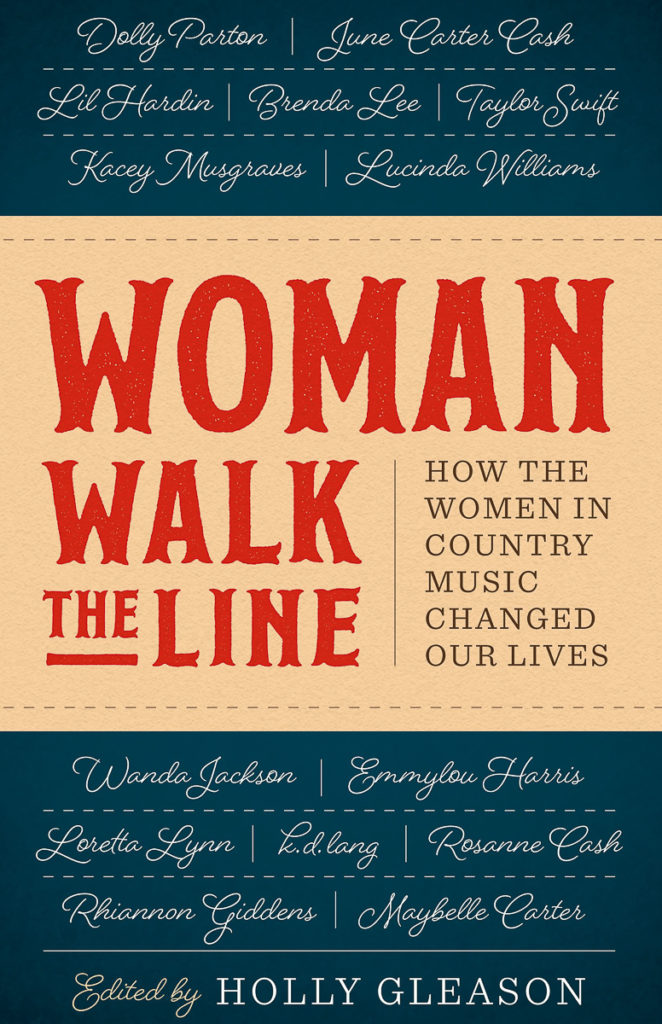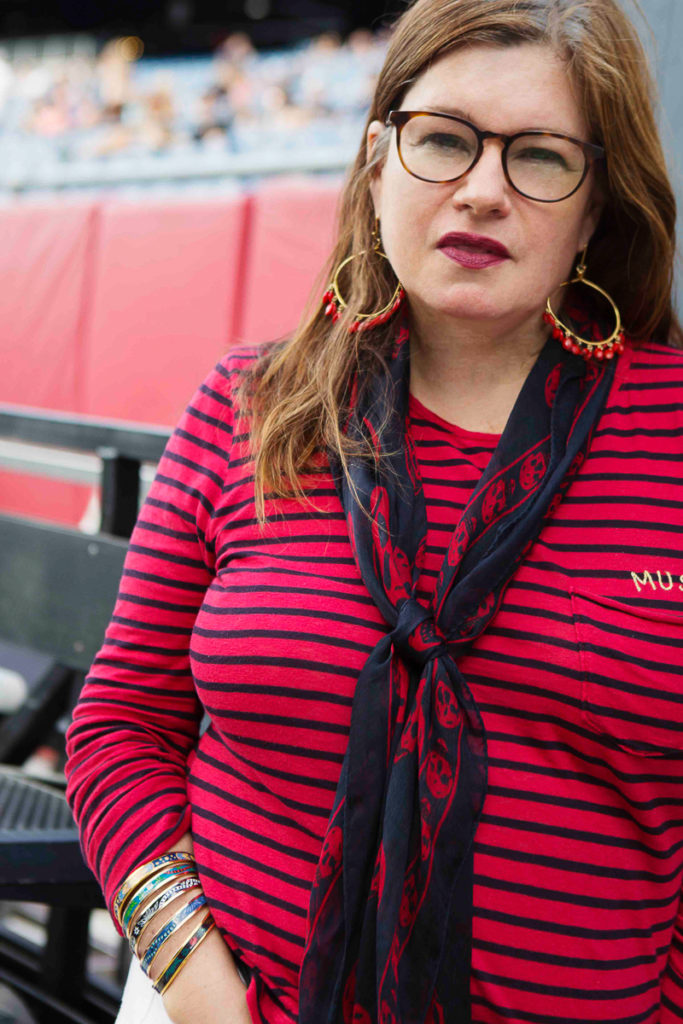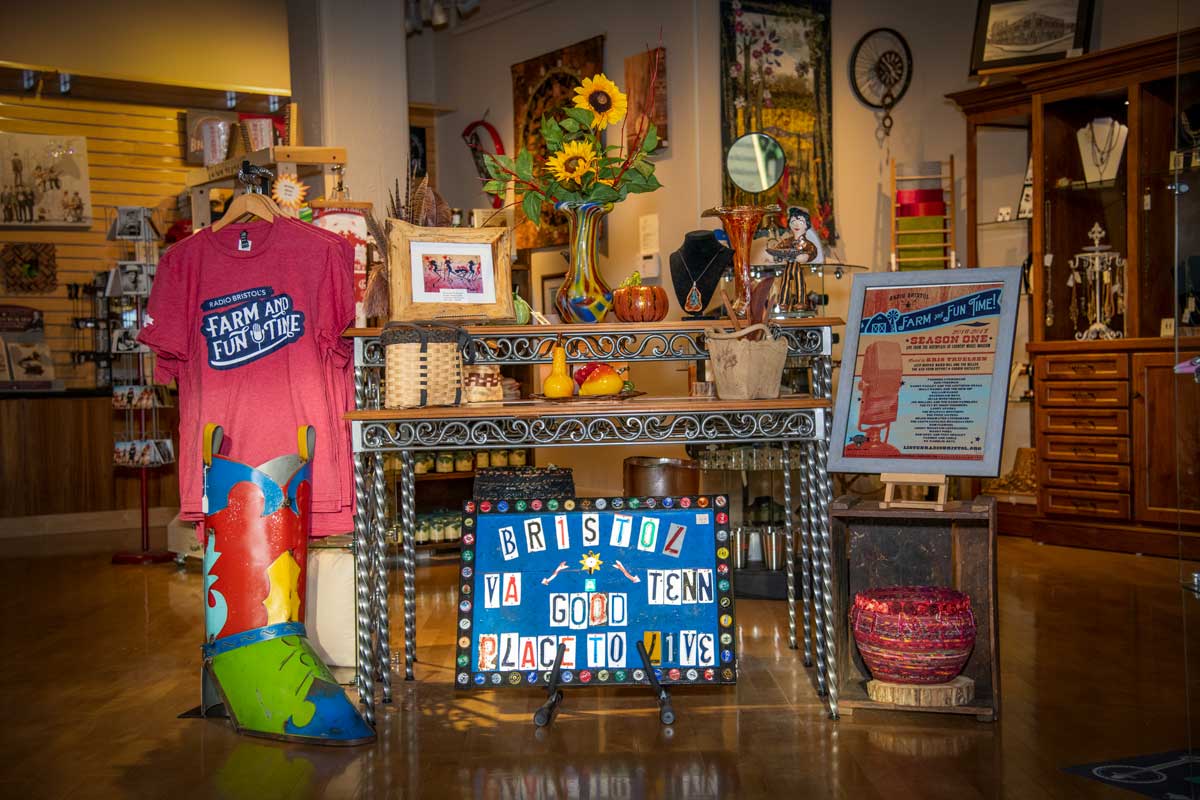
© Birthplace of Country Music; photographer: Earl Neikirk
The Birthplace of Country Music Museum prides itself on its world-class exhibits, but did you know that attention to detail also carries over into The Museum Store? The goal: To create a gallery-like shopping experience for visitors by offering one-of-a-kind crafts and goods handmade by local and regional artisans. From sculptural, glass-blown collectibles to intricately beaded music-themed handbags, great care is taken to choose pieces that elevate the status of your typical souvenir. The majority of these bespoke items are destined to become treasured keepsakes and family heirlooms.
In this edition of our blog, and in future blogs, we will highlight many of the juried artisans we have commissioned to sell work in The Museum Store. And their work is a joy to behold. To paraphrase the words of Asheville, North Carolina photographer Tim Barnwell‘s book Hands in Harmony: Traditional Crafts and Music in Appalachia, “Traditional music and handcrafts are both expressions of the creative mind and the accomplished hand.”
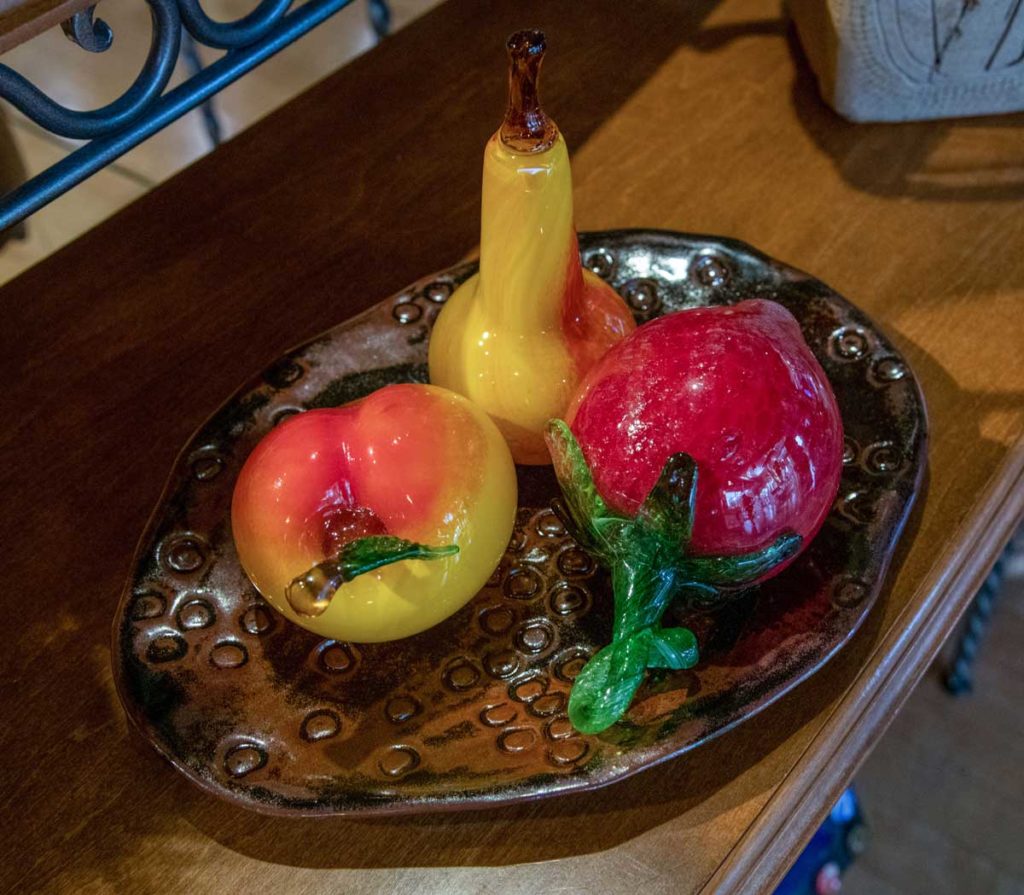
© Birthplace of Country Music; photographer: Earl Neikirk
Johnny Glass: Glass by Glass Studios
Perhaps his name was a self-fulfilling prophecy as Johnny Glass is a master creator of hand-blown glass. Based in Knoxville, Tennessee, and Los Angeles, California, Johnny travels cross-country demonstrating his art at various craft shows and venues in a mobile studio he custom designed and built himself. He is so self-sufficient, in fact, that he can bring his full glassblowing studio to any location and have it fully operational within 12 hours to serve as a classroom in which to teach others or to provide demos.
A native of Knoxville, Tennessee, Glass earned his undergraduate degree at Tennessee Tech, going on to study under some of the best-known glass artists in the country both in California and Washington. Glass is currently working on his Masters in Fine Arts at Tulane University in New Orleans where he has earned a full scholarship. He works part time at the college’s extensive glass studios taking care of the facilities and their six furnaces.
Johnny’s mission is to bring awareness and renew interest in the art of glass, and his life’s ambition is to teach what he’s learned at a major university. At The Museum Store, you’ll find his signature pumpkins in addition to paperweights, mugs, vases, Christmas trees, and much more.
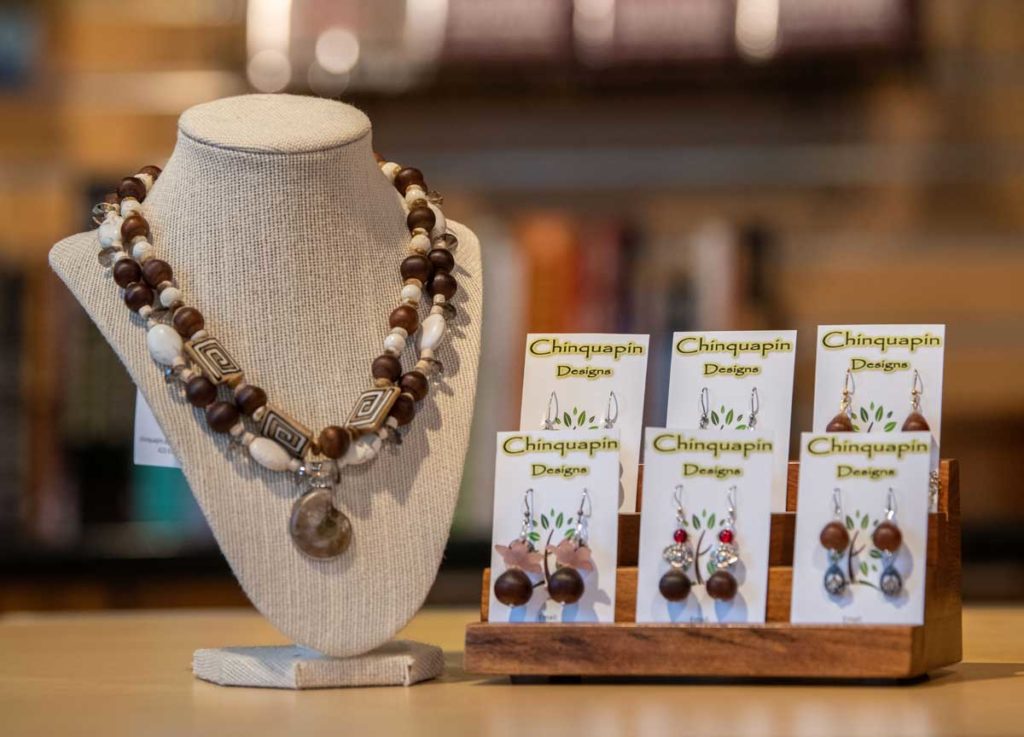
© Birthplace of Country Music; photographer: Earl Neikirk
Paula Kahn: Chinquapin Designs, LLC
Since childhood, Franklin, North Carolina native Paula Kahn has always enjoyed playing with chinquapins – those smooth, mahogany-colored bead-sized nuts found in the center of prickly burrs.
“When I was little, we used to string them and wear them to school as necklaces,” said Paula, and with that inspiration, she has incorporated her fascination with these tiny tree pearls into her own line of jewelry.
“You boil the chinquapins, you dry them in an attic under a screen, and you drill them one at a time to make a bead.”
Paula now lives in Abingdon, Virginia, working on her unique jewelry with the help of her husband and her 90-year-old father. The chinquapins she uses come from trees on her farm, trees that have a family pedigree as they were imported from her father’s former farm near Franklin, North Carolina, where she grew up. She creates to bring awareness, as she puts it, to younger generations who may not have an inkling of how popular the chinquapin nut once was.
One of The Museum Store’s original juried artisans, Paula has recently started combining the chinquapins with geodes, fossils, and gems she acquires from Franklin, which is known as the “Gem Capital of the World.” This has resulted in a significant increase in sales of her creative jewelry in The Museum Store and elsewhere.
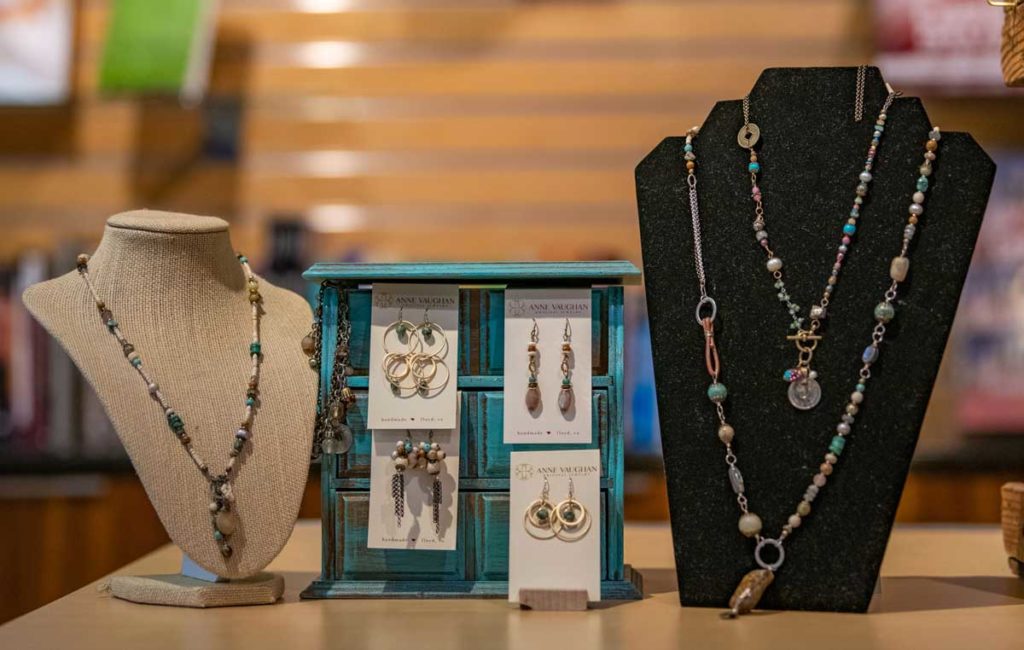
© Birthplace of Country Music; photographer: Earl Neikirk
Anne Vaughan began creating jewelry in her home back in 2006 after the birth of her second child, leaving her career in education behind to forge a new path. In the beginning she made one piece per day from the basement of her home in Floyd, Virginia, increasing exponentially to a total of around 60,000 pieces of jewelry made up to today. Her business has grown so much that she now employs four local women part-time to help with jewelry assembly. Today her jewelry can be purchased in dozens of art galleries, museums, festival booths, and high-end boutiques across the country.
Anne uses a diversity of production techniques along with quality gemstones, handmade flower clusters, vintage and repurposed jewelry parts, and multi-colored pearls in her work, with new lines being created every couple of weeks to keep things new and fresh for her sellers.
“Operating a small business is so challenging, but you learn so much,” said Vaughan. “I am always searching out new techniques and methods that I can incorporate into my work.”
Each of these artisans, along with around 50 others, are featured in The Museum Store at the Birthplace of Country Music Museum. Museum admission is not needed when visiting The Museum Store, and it’s a great destination for holiday shopping.
*Note: There’s perhaps nothing more personal than a gift of the arts, so be sure and stop by the museum on #ArtistsSunday November 29 and support our local artisans and small businesses! The day is dedicated to encouraging consumers to shop with artists and give something special, unique, and handcrafted this holiday season.


